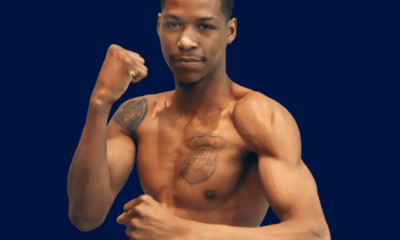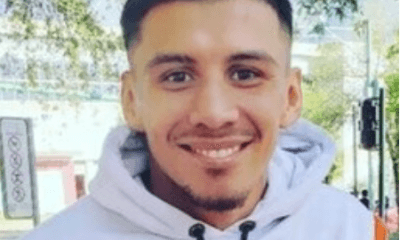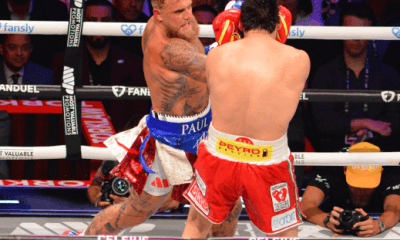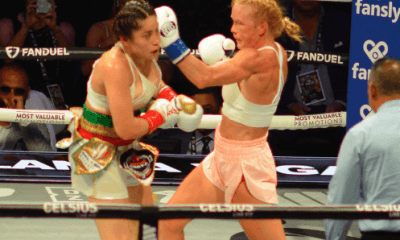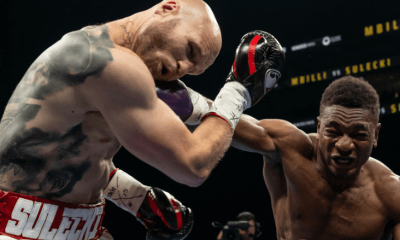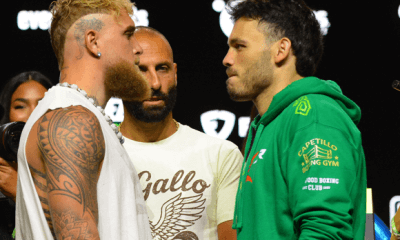Featured Articles
Raul Curiel Wins by Stoppage in Last Seconds at Fantasy Springs
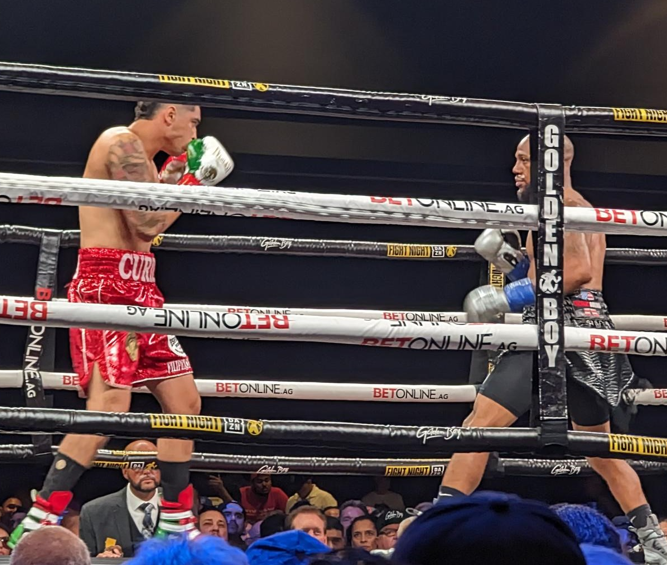
INDIO, Ca.-Rising welterweight Raul Curiel out-worked Brooklyn’s defensive-minded Courtney Pennington and won by surprise stoppage in the last round with mere seconds remaining in the regional title fight on Thursday.
Pennington never touched the canvas.
“He was a great opponent. He gave everything he got,” said Curiel.
Curiel (13-0, 11 KOs) retained the NABF welterweight title by knockout over Pennington (17-7-3, 7 KOs) at Fantasy Springs Casino in front of about 1,000 fans. It was a win by knockout by the Mexican fighter trained by Freddie Roach.
Curiel was able to solve Pennington’s defense early especially with the long left hook that constantly caught the Brooklyn fighter while in retreat. It forced the challenger to change tactics.
It became a tactical fight with Pennington not allowing Curiel to unload with big shots. His low guard left few openings for body shots, but the left hook was always able to connect from long range.
Though Pennington did absorb some blows, he never seemed hurt.
“He was a tough opponent,” said Curiel who knocked out veteran Brad Solomon in his previous bout.
In the sixth round both fighters collided heads, but no visible cut emerged. The fight resumed with Curiel often the busier fighter.
Fans were restless and expected more action, but Pennington was picking his moments and stifling any big attacks with clinches. He also connected with lead rights.
In the last round Curiel connected with a solid left hook. The referee began to close in watching the two fighters. Though Pennington was on the move Curiel was able to connect with the same snapping left hook he had landed in all the previous rounds, but the referee Gerard Brown decided he had seen enough and stopped the fight with Pennington standing in the corner at 2:53 of the 10th and final round.
Other Bouts
Manny “Gucci” Flores (16-1, 12 KOs) floored Nicaragua’s Jerson Ortiz (17-8, 8 KOs) several times in a super bantamweight clash. Twice Flores dropped Ortiz in the first round, first with a left uppercut and then with a right hook from a southpaw stance. Ortiz survived but couldn’t survive a second round as Flores staggered Ortiz with a left cross and then unleashed five blows. Ortiz slumped to the floor and was counted out at 50 seconds of the second round.
Grant Flores (3-0, 2 KOs) defeated Florida’s Jaleik Bogle (4-2-2, 2 KOs) by unanimous decision after six rounds in a well-matched fight between super welterweights.
Flores doesn’t have blazing speed but knows how to fight. He was especially effective with overhand rights and body shots throughout the match. Bogle was knocked down in the fifth round but was able to avoid the big blow by changing to a southpaw stance. It bought him time. All three judges scored it 60-53 for Flores.
Manny and Grant Flores are cousins.
Newly signed prospect Daniel Luna (3-0, 3 KOs) quickly figured out Alexander Gutierrez (0-3) and delivered a right and left to the body and down went the shorter fighter. He was counted out at 1:53 of the second round of the lightweight match.
Luna fights out of Victorville and brought a large crowd to watch him.
“It’s super exciting,” said Luna who resembles someone else from Victorville. At least physically.
San Diego’s Jorge Chavez (8-0, 6 KOs) knocked out the taller Marvin Solano (24-11, 8 KOs) in the third round. At first both fighters needed a little time to figure out each other’s style. Nicaragua’s Solano liked to fire looping shots and Chavez took advantage of that with short counters. In the third round after Solano connected with a left hook, Chavez pressured the Nicaraguan backward and launched a leaping left hook a la Roy Jones Jr. and added a right to send Solano to the floor. He was counted out at 2>59 of the third round.
Cathedral City’s Leonardo Sanchez (6-0, 5 KOs) picked apart John Alimane (8-5, 4 KOs) once he targeted the body with left uppercuts. Soon, in the next round, Sanchez connected with a left and four more blows that sent Alimane to the canvas. The referee counted out the Filipino fighter 27 seconds into the second round of the super featherweight fight.
To comment on this story in the Fight Forum CLICK HERE
-

 Featured Articles3 weeks ago
Featured Articles3 weeks agoAvila Perspective, Chap. 330: Matchroom in New York plus the Latest on Canelo-Crawford
-

 Featured Articles1 week ago
Featured Articles1 week agoVito Mielnicki Jr Whitewashes Kamil Gardzielik Before the Home Folks in Newark
-

 Featured Articles4 weeks ago
Featured Articles4 weeks agoAvila Perspective, Chap 329: Pacquiao is Back, Fabio in England and More
-

 Featured Articles3 weeks ago
Featured Articles3 weeks agoOpetaia and Nakatani Crush Overmatched Foes, Capping Off a Wild Boxing Weekend
-

 Featured Articles2 weeks ago
Featured Articles2 weeks agoCatching Up with Clay Moyle Who Talks About His Massive Collection of Boxing Books
-

 Featured Articles3 weeks ago
Featured Articles3 weeks agoFabio Wardley Comes from Behind to KO Justis Huni
-

 Featured Articles1 week ago
Featured Articles1 week agoMore Medals for Hawaii’s Patricio Family at the USA Boxing Summer Festival
-
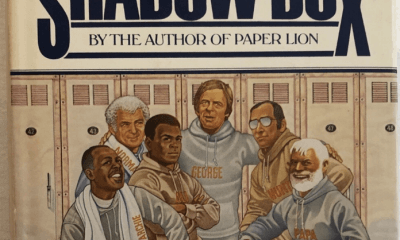
 Featured Articles4 weeks ago
Featured Articles4 weeks agoDelving into ‘Hoopla’ with Notes on Books by George Plimpton and Joyce Carol Oates

